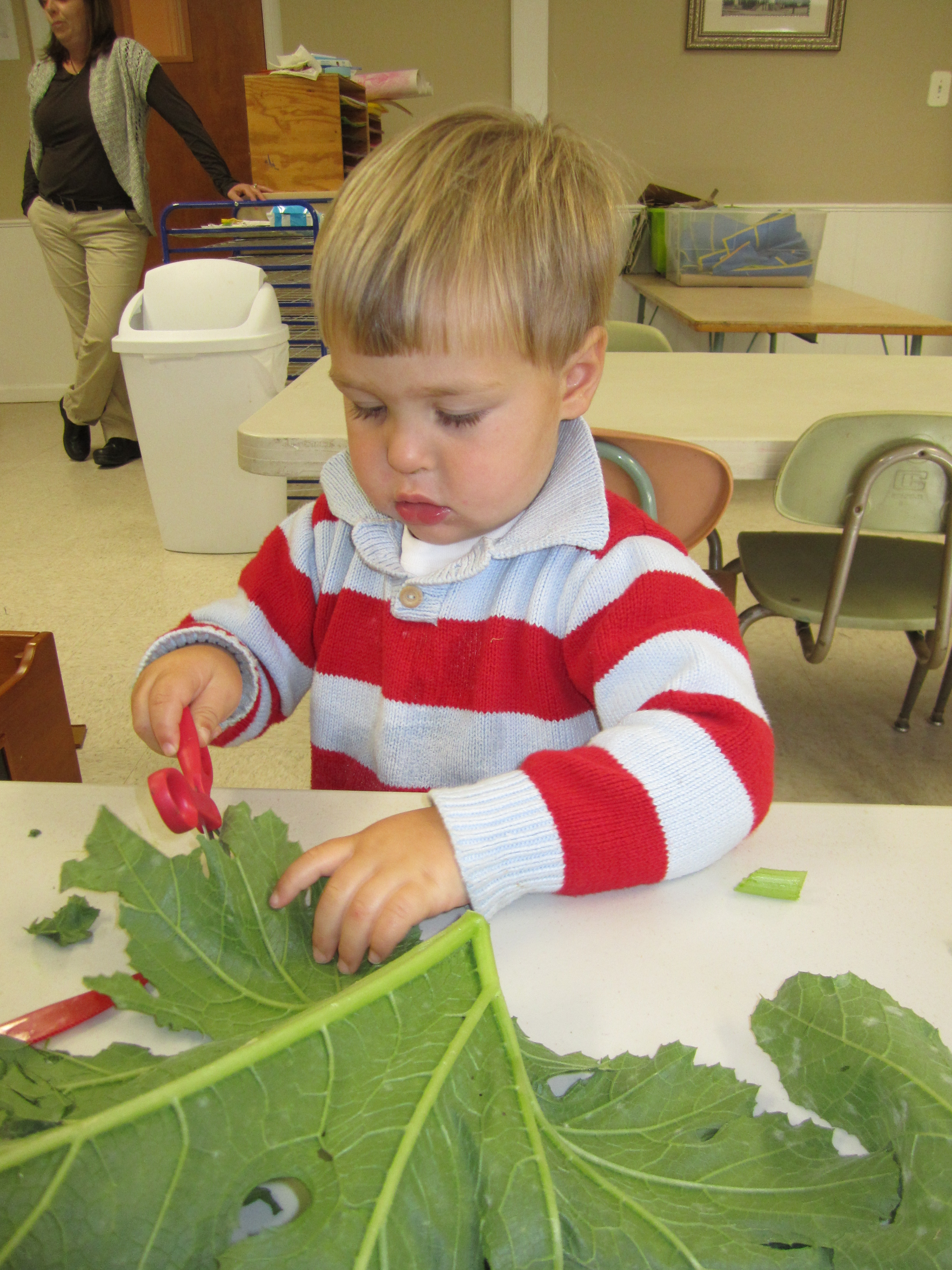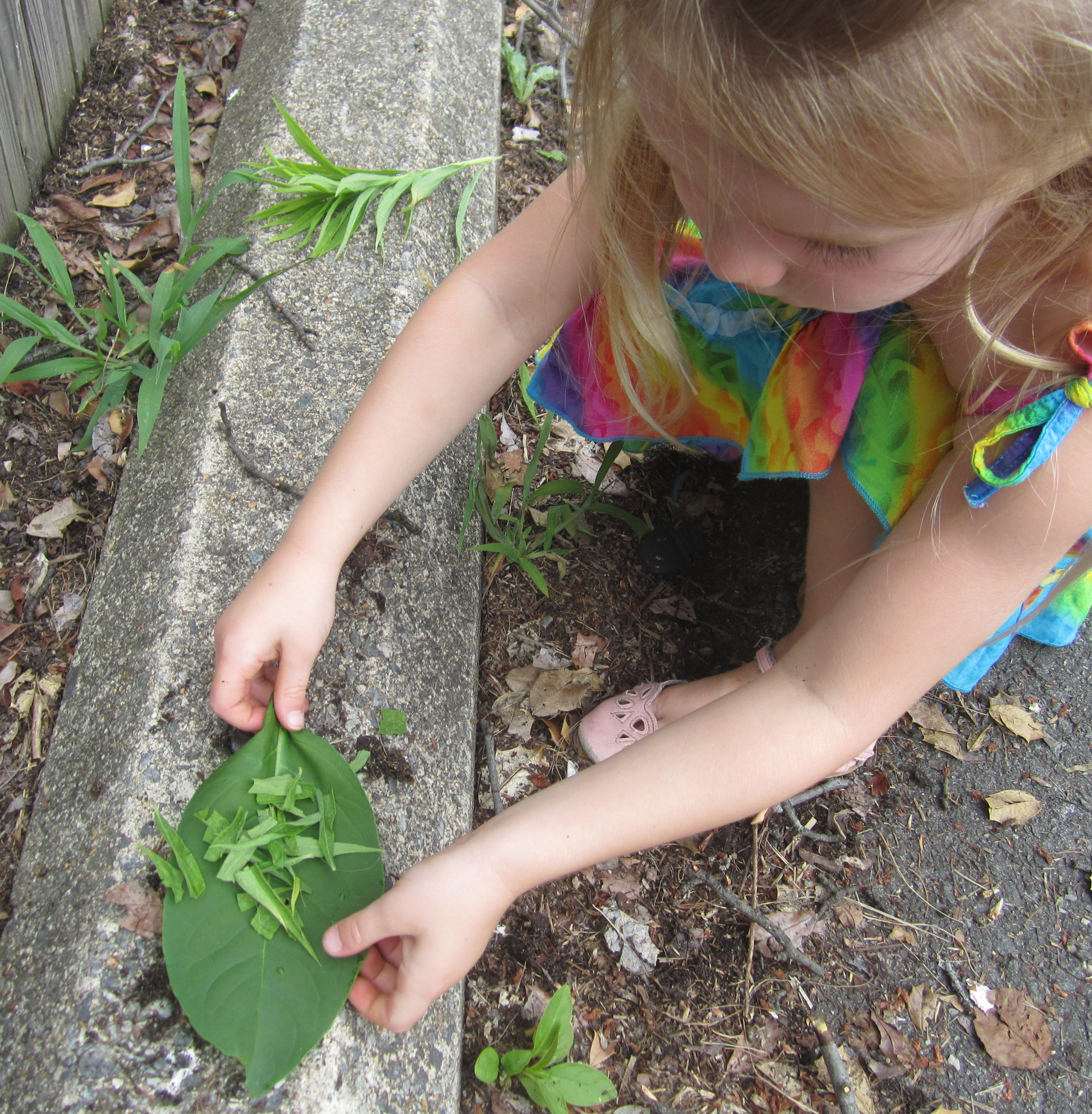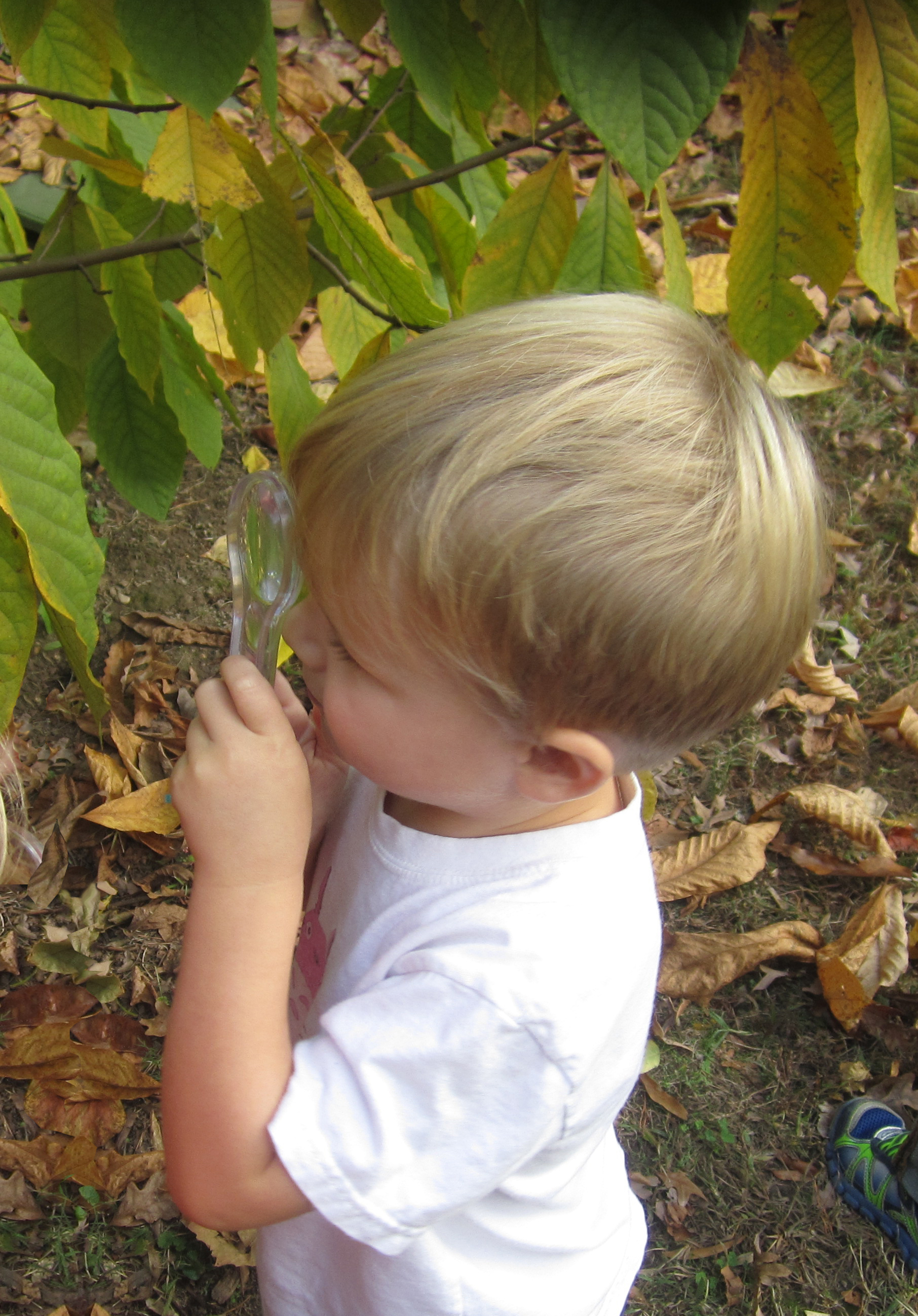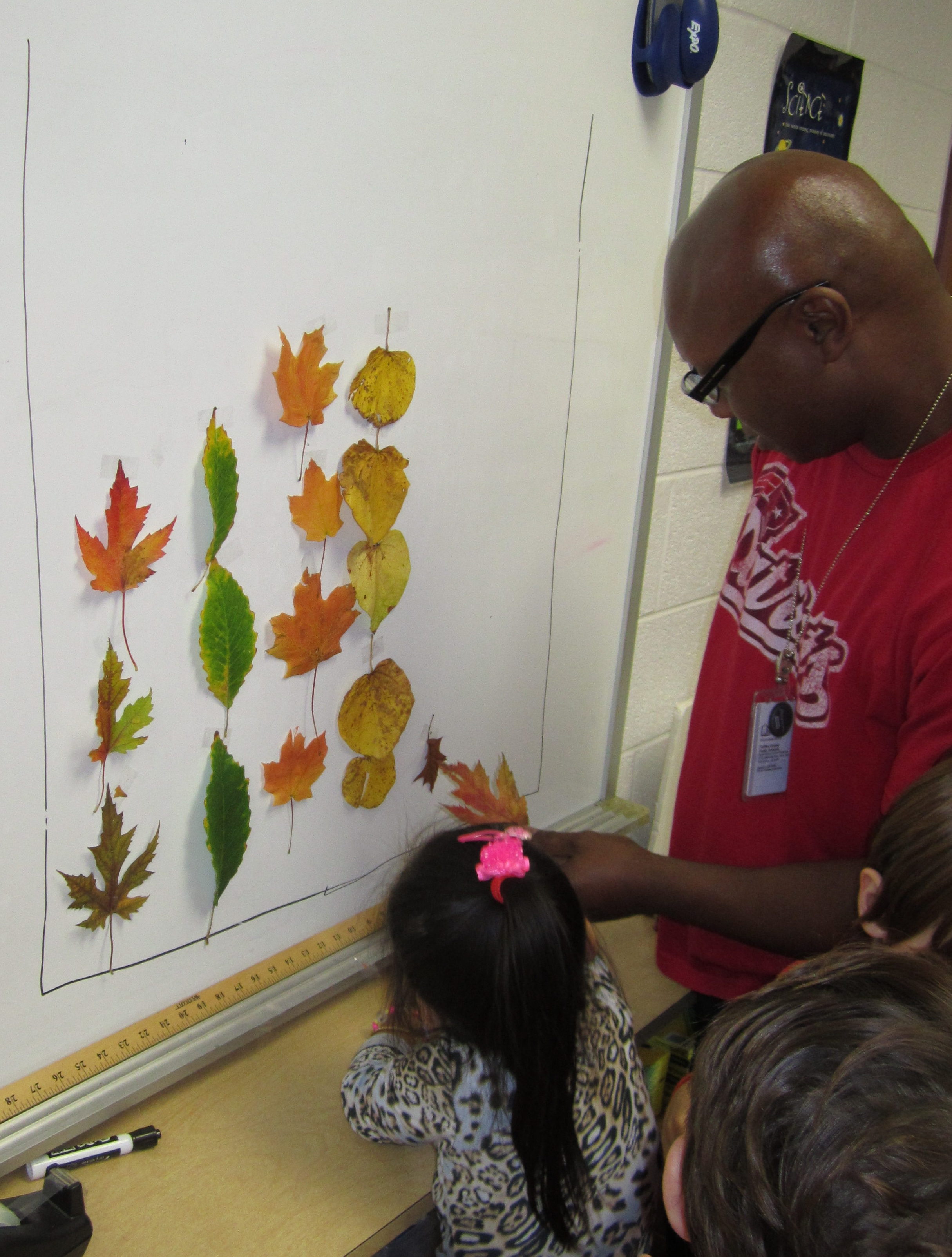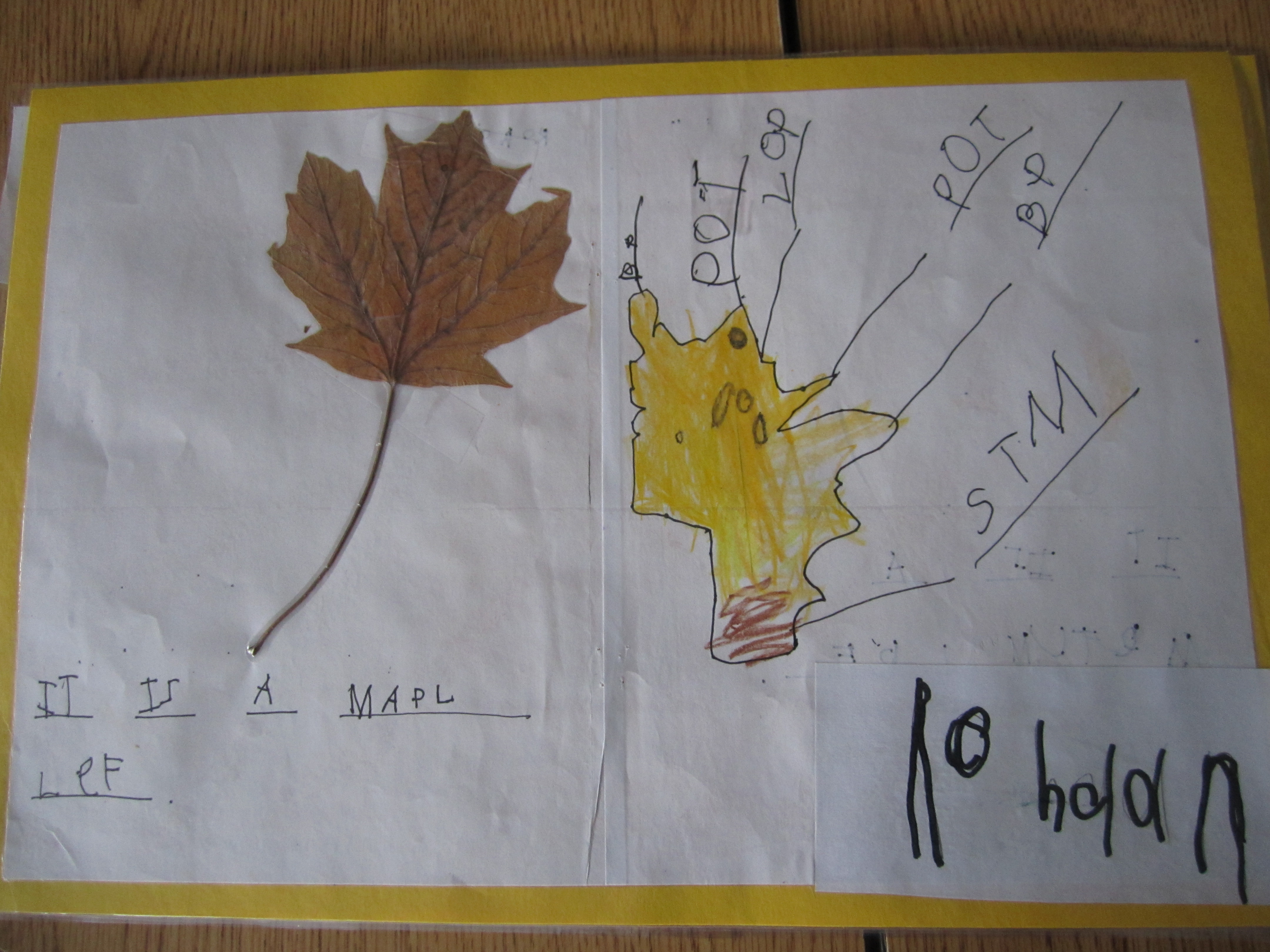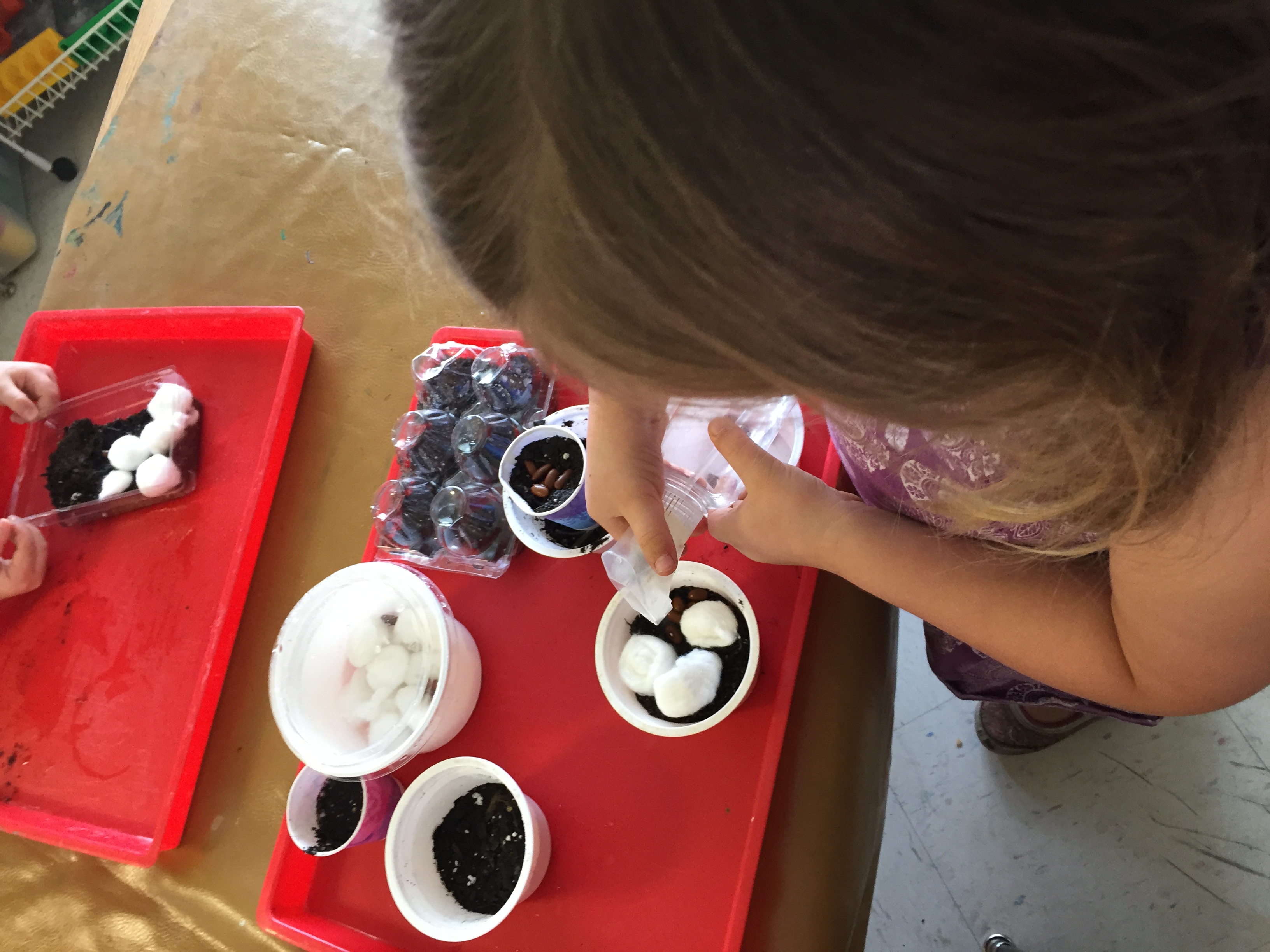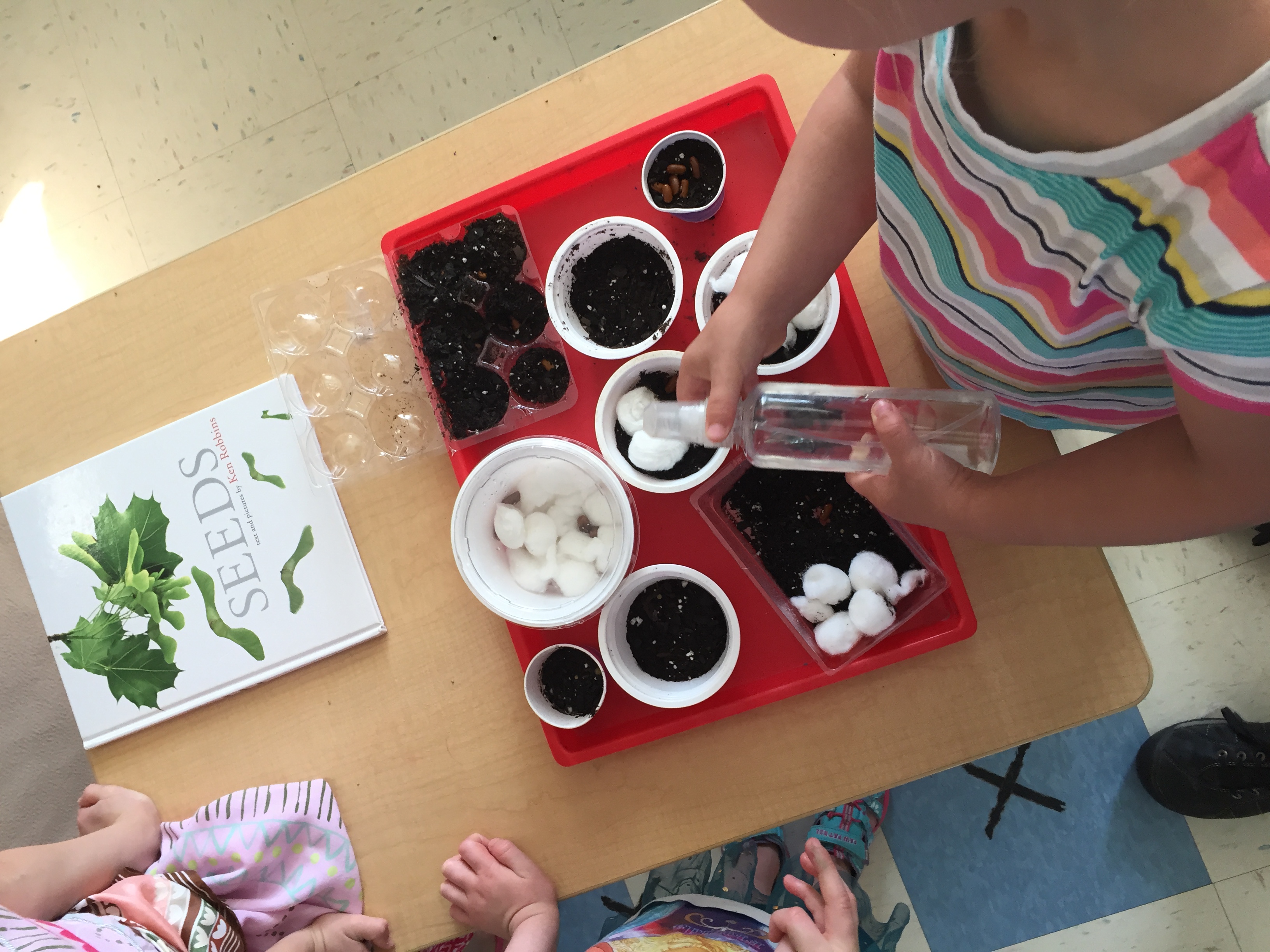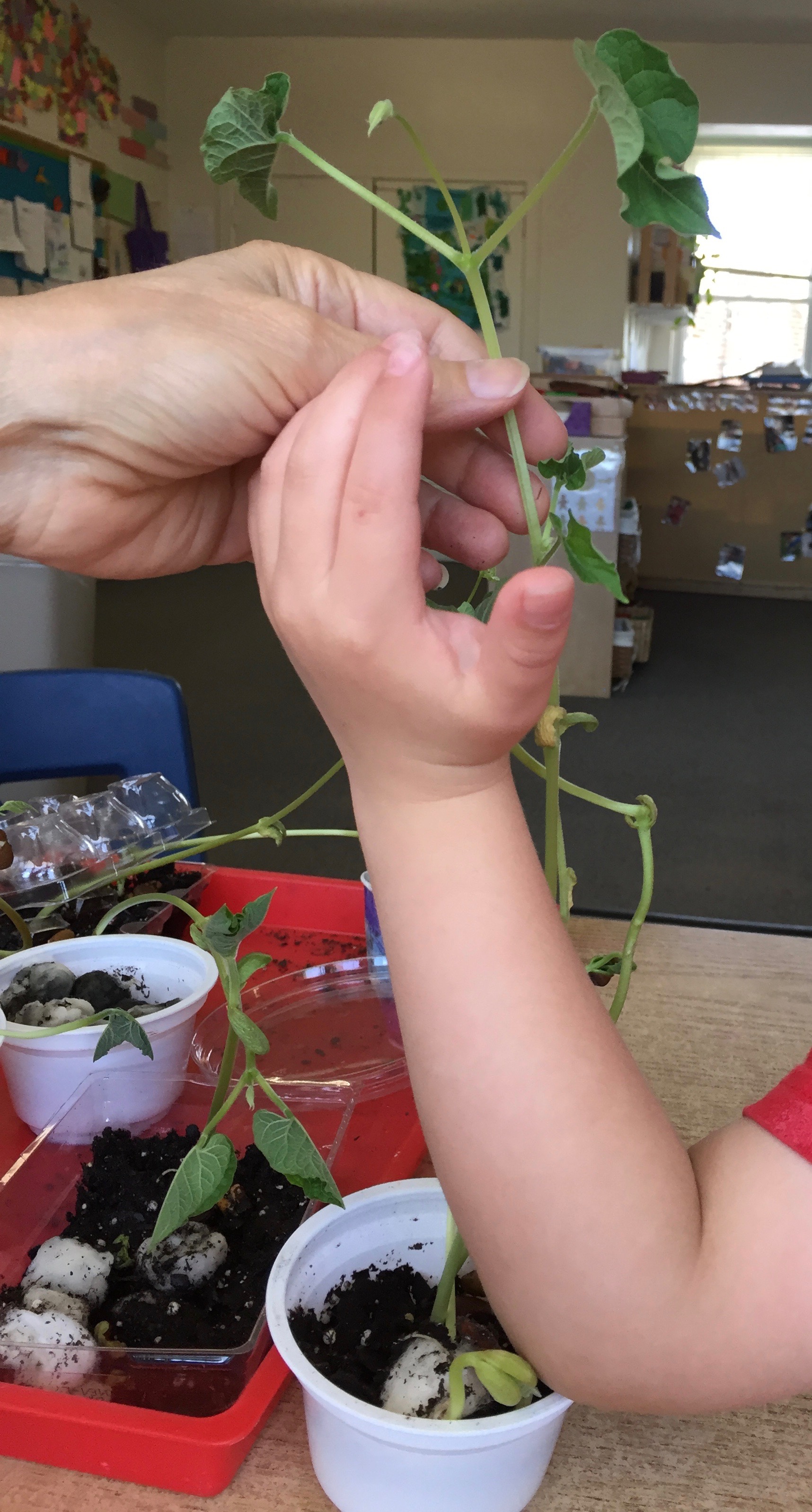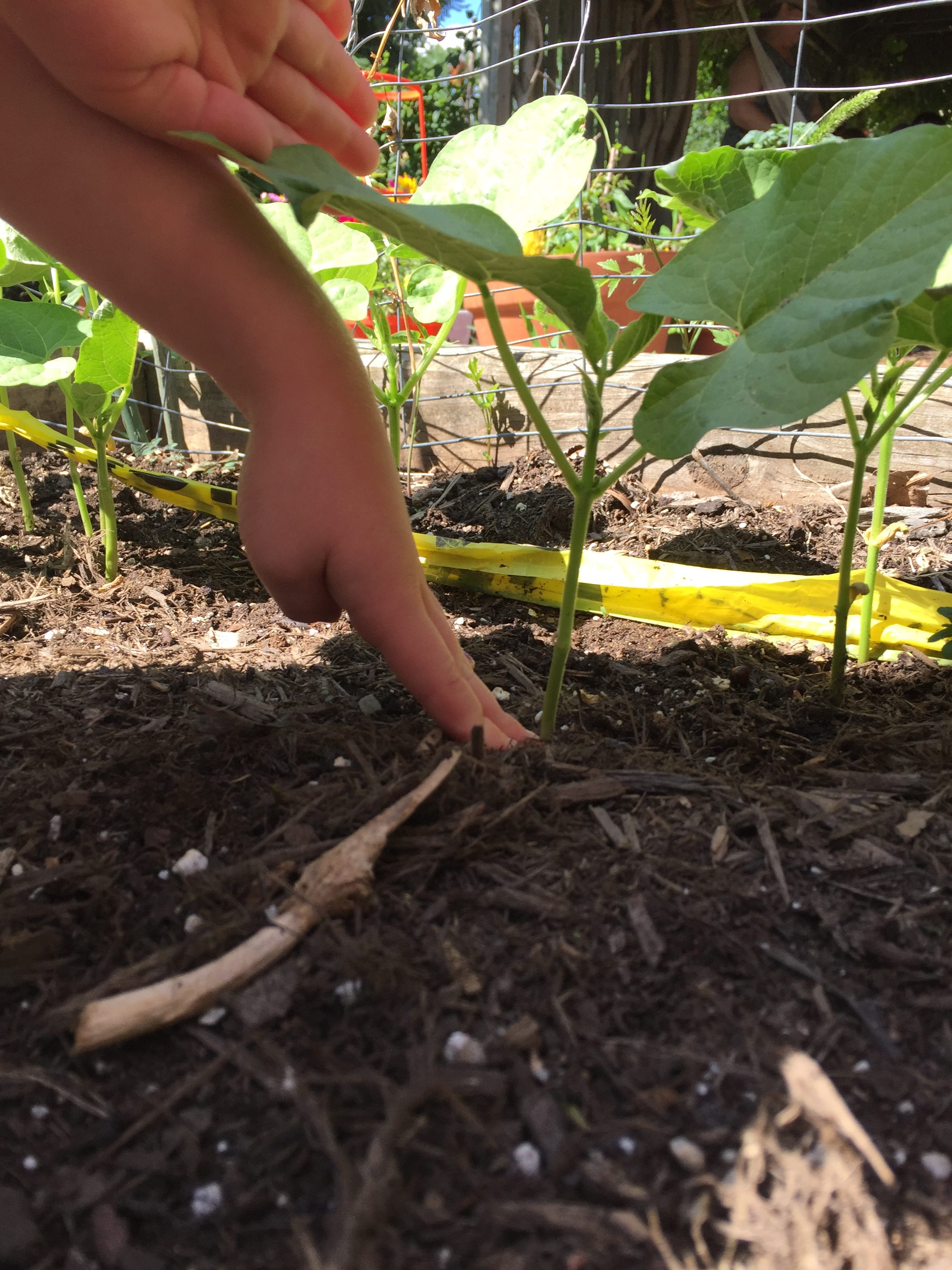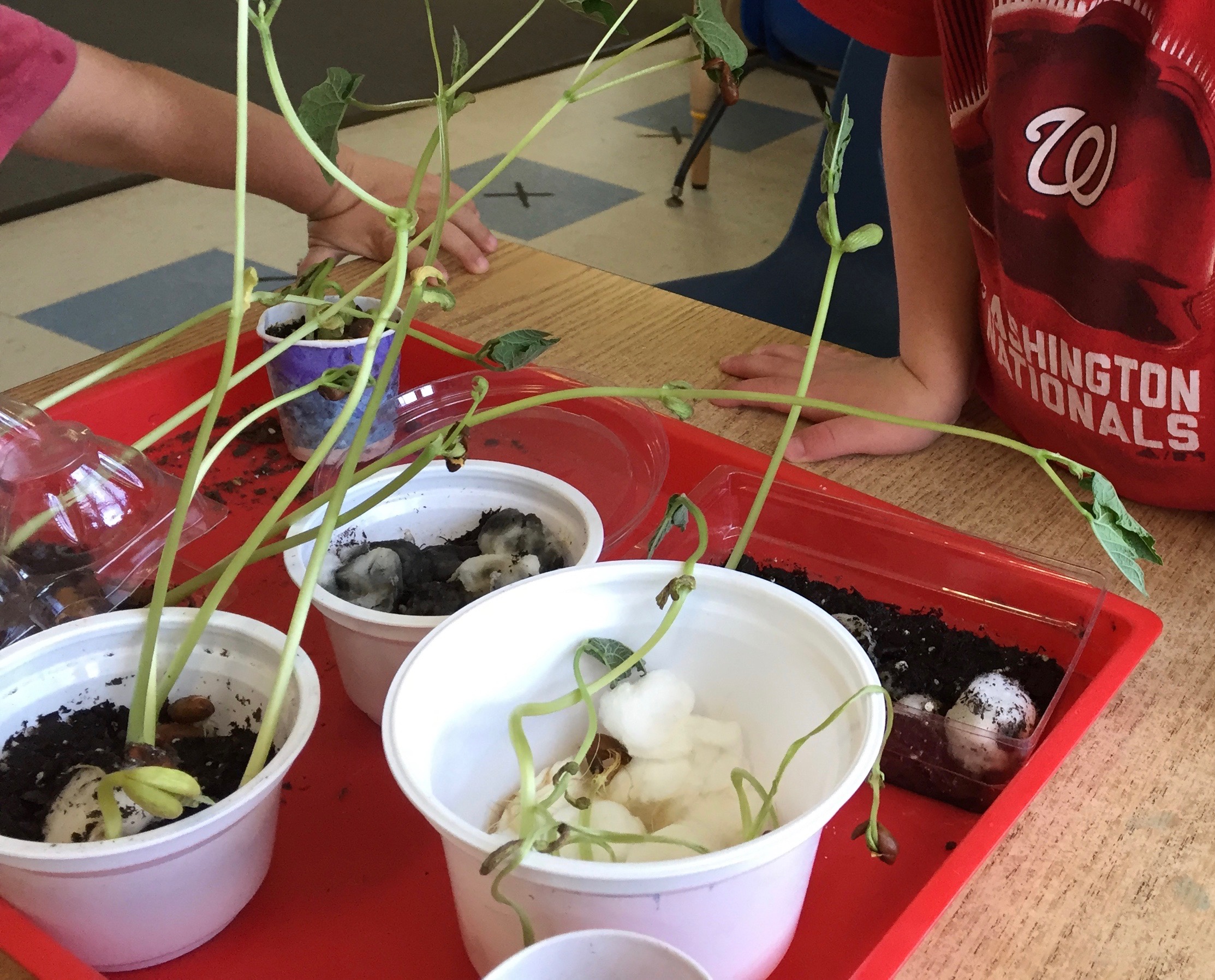2nd & 6th gr. Space Buddies have “NASA Fridays” FUN!
By Korei Martin
Posted on 2017-10-19

TEACHERS! What do you do with that last 40 minutes of class at the end of the week on a Friday? You may have thoughts like, “I can’t wait until this week is over! I’m exhausted and these kid are driving me nuts!” Well, help has arrived. End the week with a “Mission Accomplished” feeling, knowing your students have something to look forward to on Fridays using NASA educational resources. It meets all the required standards across the content areas! I will share what I do; and I am convinced you can do this, too!
My name is Pam Leestma, and I’m a 2nd grade teacher at Valley Christian Elementary School in Bellflower, CA. In May of 2017, (and for the past 10 years), my 2nd graders and Mr. Nick Vander Dussen’s 6th graders from my school presented their Space Station models to NASA’s Digital Learning Network (DLN) expert, Michael Hare at Johnson Space Center. Our “Space Buddies” were divided into six working groups. After meeting almost every Friday throughout the year, which we called “NASA Fridays,” we learned about space related topics and living and working on the International Space Station. We ended the year with culminating activities which included planning our Space Station models, building them with parent help, using lots of “junk”, soda bottles, and hot glue guns for the modules, deciding, and then practicing what part of the model each student would share about with the NASA expert. “NASA Day” arrived and the “Space Buddies” presented their six models, learned more about the International Space Station, had a time of Q&A, and saw LIVE images of the earth from the ISS! It was “Mission Accomplished!” for all the students and they can now claim, “We talked to NASA!”

I am inviting you to try having your own “Space Buddies.” Find a class at your school to connect with! During the year, “NASA Fridays” can be simple like watching a short video clip of living and working on the International Space Station or doing a hands-on activity. It is always a good idea to check the NASA site for the most current events going on in Space and sometimes you can choose the NASA update for your time together. “Space to Ground” is a wonderful, 2-3 minute weekly update of activities.
The exciting resource that you can participate in right now is the “Year of Education on Station.” STEM on Station is highlighting teacher Joe Acaba’s mission currently on the ISS as well as teacher Rickey Arnold’s flight in the Spring of 2018.
I ALWAYS check the NASA main page and click on NASA TV, too. You can watch for great programing to share or watch a thrilling, LIVE launch if it is during school hours. Sometimes even a spacewalk which my class watched LIVE of Joe Acaba, is a blast!
“Spot the Station” brings much excitement to my students, when they can watch a visible pass of the ISS fly over. Enter your location and you can sign up for alerts of when the ISS will fly over your area. We wave at Joe Acaba when we see it and I have the students send me pictures of their famiy and friends watching it and even kid’s sports teams are stopping at practice to “ooo and aww!”
The goal of “NASA Friday’s” gives the children a reason to be together and learn about space related events using NASA resources! When you do something special, make sure to take pictures of your activities! It is evidence of using STEM related topics using NASA resources! You need a NASA media release with parent permission if you are going to share these pictures with NASA education social media. They love your pictures and so appreciate it, proving their programs have an impact on this next generation of space explorers!
I have done other activities using NASA resources and you may want to learn more about them in this NASA article – “The T in STEM.”
As this school year begins, consider launching NASA STEM resources into your curriculum!
Pam Leestma – 2nd grade teacher
NASA Excellence in Teaching Award
National American Star of Teaching Award
Valley Christian Elementary School – 17408 Grand Ave. Bellflower, CA 90706
school: 562/920-9902 pammy_ccc@hotmail.com

Student Talk: The Use of Dialogue and Discussion
By Korei Martin
Posted on 2017-10-17
This summer a group of Oregon teachers prepared to launch the Oregon Science Project, which focuses on professional development for rural teachers around NGSS. During our 3-day facilitator’s training we focused on dialogue not discussion. As a group, this distinction was new to us. What we found was we were spending most of our time on dialoguing not discussing. When in dialogue the purpose is to gain and share information, listening deeply to the information others provide. When in discussion, the purpose is to present different viewpoints and come to a decision.
As I began this new year of teaching the NGSS and using new curriculum this new idea was at the forefront of my mind. The new curriculum also encourages these processes. Scientists engage in dialogue as they share their ideas and look for perspectives from others. Students also need to practice both dialogue and discussion. As they gather information they need to dialogue and when they are using evidence to decide on a claim, they need to use discussion.
During one a lesson last week the importance and the engagement that occurs when students talk became quite evident. The curriculum we are using has structured lessons to be 45 minutes long. We had not been in-sync since we started the curriculum (starting with a warmup, doing the lesson, and ending with the homework). That day we actually started with the warm up for the lesson. I was determined to see if I could accomplish the lesson within the 45 minutes. My evaluator happened to come in during one of my class periods to observe. In my attempt to complete the lesson within the time period I rushed the students during their dialogue. The evaluator overheard several students exclaim that they were disappointed because they didn’t get to share their information.
Needless to say, I was not able to finish the lesson in the allotted time and I had cut off students in the middle of their dialogue. I was excited by the fact that they were disappointed that they didn’t have time to finish sharing.
Since that brief time ago, I have worked at being sure to give students adequate time to dialogue and discuss. But I have also learned that they need to have a very clear purpose. The students have been gathering evidence over the past week or so and this last week they had to decide which claim their evidence was supporting and how well it supported the claim. They needed to come to a decision about their evidence, hence they were involved in discussion. But the students had trouble with discussion. They could come to a decision but when quizzed about why they ranked the evidence where they did, they couldn’t explain why they didn’t rank the strength of the evidence higher or lower than they did. So, I explained in greater detail that they needed to be able to say why it was ranked the way it was and why they didn’t rank it higher or lower. I asked them to discuss the evidence again with this in mind. About a third of the students had changed their rankings and could explain in much greater detail why it was placed there.
These processes are new to most students. They can’t just go with their “gut” but need to be able to clearly explain how strong the evidence is. This is an important step to being able to write an argument to support a claim. Both aspects of talk, dialogue and discussion, are important steps along the way. It is important to be purposeful in what we want the talk to be, do they need to be gaining and sharing information or coming to a decision. The more students have opportunities to practice talk the better they will become and the better their arguments to support a claim will be.
This summer a group of Oregon teachers prepared to launch the Oregon Science Project, which focuses on professional development for rural teachers around NGSS. During our 3-day facilitator’s training we focused on dialogue not discussion. As a group, this distinction was new to us. What we found was we were spending most of our time on dialoguing not discussing. When in dialogue the purpose is to gain and share information, listening deeply to the information others provide. When in discussion, the purpose is to present different viewpoints and come to a decision.
Overwhelmed
By Gabe Kraljevic
Posted on 2017-10-16
 I’m a new teacher and I can’t believe how ragged I feel—I seem to be just barely ahead of the class. I have lessons that are not going to plan and I feel like I’m just running around non-stop. Please help! —W., Virginia
I’m a new teacher and I can’t believe how ragged I feel—I seem to be just barely ahead of the class. I have lessons that are not going to plan and I feel like I’m just running around non-stop. Please help! —W., Virginia
This is probably no surprise to anyone in the first months of teaching: this job is tough! You may often feel you have two types of lessons—those that bomb, and those that bomb BIG!
Here are some survival tips:
- Colleagues: They have done it before; they know the school; they know the students. Develop good relationships and don’t be afraid to ask for help. Talk about procedures and protocols that “everyone knows” but aren’t written down. Talk to your colleagues about grading and the time you can expect to spend on it and other tasks.
- Calendar/Daybook: Use it faithfully. Don’t be surprised by deadlines and meetings.
- Transitions: Moving from one activity to another in class is where breakdowns can occur. Take time to plan how you will distribute materials. Plan your student groups.
- Clean up: Don’t do all the clean-up yourself! Leave time and enlist your students’ help. Don’t let them leave until the room is ready for the next class. (Stand at the door and point, “That beaker is not where it should be;” “Those paper towels need to be in the garbage.”)
- Venting: Talk to someone when you have a bad day. Find a confidant and have a rant, and then don’t dwell on it.
Hope this helps!
Photo: https://www.pexels.com/photo/woman-working-girl-sitting-133021/
 I’m a new teacher and I can’t believe how ragged I feel—I seem to be just barely ahead of the class. I have lessons that are not going to plan and I feel like I’m just running around non-stop. Please help! —W., Virginia
I’m a new teacher and I can’t believe how ragged I feel—I seem to be just barely ahead of the class. I have lessons that are not going to plan and I feel like I’m just running around non-stop. Please help! —W., Virginia
Fall leaves, props for learning
By Peggy Ashbrook
Posted on 2017-10-14

Poison Ivy By Famartin (Own work) via Wikimedia Commons [CC BY-SA 4.0 (https://creativecommons.org/licenses/by-sa/4.0)]
If you live in an area of the world where leaves change color during Autumn you and the children might be looking for “The Most Beautiful Leaf” among the many fallen leaves. You can draw children’s attention to leaves at any time of the year by using them as play materials—a large leaf makes a plate and the small ones become pretend “food.” Knowing which leaves are safe for children to handle is the first consideration! Poison ivy leaves turn a beautiful red color in the fall in many areas but they are still able to irritate our skin and make it blister.
Looking at leaves and noticing their structure begins young children’s understanding of their function. Cutting leaves with scissors as a way to practice this fine motor skill also teaches children that leaves have different parts. It is easy to imagine the veins as small pipes carrying water to the body of the leaf–especially when you cut one open and see the “juice.” Making a rubbing on paper with crayons shows off the pattern of veining which is particular to each species. Dropping water onto the upper and undersides of leaves may reveal the tiny hairs that some species of plants have on their underside as children note how water drops either slide off or pool up. Understanding the function of this form, how the hairy underside and smooth upper side help the plant survive, will come later. Magnolia leaves are particularly useful for showing differences between upper and undersides. They make wonderful boats too, floating in puddles or small tubs of water.
- Cutting a leaf with scissors.
- Imaginative play with leaves.
- Using a magnifier to see leaf structure.
- Graphing leaves by shape.
- Close observation through drawing.
Changes in leaves can be a sign of changing seasons that young children can observe along with changing air temperature and the position of the sun in the sky. Understanding the chemistry involved in those beautiful words “chlorophyll” and “photosynthesis” can wait until middle school when students begin learning that living things are made of cells (MS-LS1-1 From Molecules to Organisms: Structures and Processes). See Appendix E – Progressions Within the Next Generation Science Standards to see how student thinking progresses with grade level.
Teachers who want to learn more about the processes that cause deciduous leaves to change color in the fall can read these resources:
Robertson, Bill. 2012. Q: Why Do Leaves Fall off Trees in the Fall? Science and Children. 49(7): 68-69
USDA Forest Service, Northeastern Area. Why Leaves Change Color.
The United States National Arboretum. The Science of Color in Autumn Leaves.
The changing leaf color in Autumn occurs at a cellular level due to a process that young children are not yet ready to understand. But they do understand beauty and how to make a collection of the “best” leaves!
Safety Blog
Preparing for Medical Emergencies
By Kenneth Roy
Posted on 2017-10-13
Science teachers need to know the necessary actions to take in the event of a medical emergency. The Occupational Safety and Health Administration (OSHA) and American National Standards Institute (ANSI) provide insight on this issue by means of workplace regulations and standards.
OSHA first aid standard
The OSHA 29 CFR 1910.151 Subpart K Medical and First Aid standard requires the employer to have medical personnel who can administer first aid and are available for advice and consultation. In school settings, this is usually the school nurse. There must be first aid supplies available at the site. In situations where a person’s eyes or body may be exposed to corrosive materials, OSHA notes that facilities for quick drenching or flushing of eyes and body (e.g., eyewash and safety shower) must be available.
Although OSHA does not require first aid training for employees who have medical personnel on or near the site, first aid training is essential for science teachers. Science teachers and supervisors must have some training with drenching or flushing equipment. Use of eyewash and acid showers should be annually reviewed as part of the first aid training of all science teachers and supervisors.
The first few minutes following a safety incident are critical, so science teachers need to respond to the situation even before medical responders arrive. Moreover, the victim of a lab accident may seek legal action should a teacher provide first aid without training or fail to provide first aid, so science teachers should request formal first aid training from their employers.
Dealing with emergencies
The following list describes examples of lab safety incidents that require first aid training for science teachers.
• Burns. Heat-producing equipment (including Bunsen burners, matches, and hotplates) and chemical and electrical sources can cause burns. Should that happen, immediately soak the burned area in cold water and request immediate assistance from the school’s healthcare provider.
• Chemical exposure. With the increased emphasis on hands-on, process, and inquiry-based science, chemical exposure is more likely to happen inside the classroom. Review the Safety Data Sheets (SDSs) for each hazardous chemical being used prior to any laboratory work. If someone is exposed to the chemical, immediately use the eyewash or acid shower, as appropriate, and flush with copious amounts of tepid water for a minimum of 15 minutes. Request immediate assistance from the school’s health care provider.
• Poisons. Accidental swallowing of poisonous chemicals in the laboratory either by direct sources or cross contamination can happen. Review SDSs with students prior to use of these chemicals, so they all are familiar with their potential harm to the body. If the person becomes unconscious or is convulsing, request immediate assistance from the school’s healthcare provider. The same is true should the person complain of a “burning feeling” in their throat, but also provide plenty of water or milk in this situation. The teacher should give the student the drink, preferably outside the lab, to help prevent cross contamination via toxin residue in the lab. Call the Poison Control Center (1-800-2221222), too, especially if you know what poison has been accidentally taken.
• Sharp objects. Sharp objects such as a ring stand rod, dowel, or stick can be hazardous. Do not remove the object from one’s skin. Try to keep the individual calm and still. Request immediate assistance from the school’s health care provider.
• Lacerations and bleeding. Broken glassware or other sharp objects can cause lacerations. If an injured person starts bleeding, put on latex or NIOSH-approved plastic gloves and apply direct pressure to control bleeding. Request immediate assistance from the school’s healthcare provider.
• Allergic reactions. Given the high frequency of allergens in labs, teachers should ask parents and guardians to identify any known allergens prior to activities. Also, secure input from the school nurse on each student. For serious allergic reactions (anaphylaxis), see if the individual has an epinephrine auto injector and help them use it, if needed. Turn them on their side if they are vomiting or bleeding. Raise their feet about 12 inches and cover them with a blanket. Make sure their clothing is loose so they can breathe. Call 911 immediately. Request immediate assistance from the school’s healthcare provider.
• Amputations. With the use of power and hand tools in STEM labs and physics labs, there is a risk of amputations. Request immediate assistance from the school’s healthcare provider and call 911. Try to stop the bleeding in the interim by having the person lay down and elevating the part that is bleeding. Apply steady direct pressure using gloves. Check and treat for shock. For details on administering first aid to treat for shock and what to do with an amputated body part, read information provided by the U.S. National Library of Medicine.
First aid kits
OSHA does not provide a mandatory list of contents but suggests that employers follow the basic list of first aid kit contents available from the American National Standards Institute (ANSI Z 308.1-1978). Included in the list are large and small sterile bandages, adhesive tape, antibiotic cream, antiseptic solution, scissors, eyewash, and cotton balls and swabs.
In the end
First aid training is needed in science laboratories. Teachers need to make sure their administrators provide this training each year. This blog post is only a starting point. Teachers need to secure formal input from medical personnel for the proper response to each incident.
Acknowledgment
I would like to thank Jane Megson, district head nurse at Glastonbury Public Schools in Glastonbury, Connecticut, for her review and contribution to this blog commentary.
Submit questions regarding safety in K–12 to Ken Roy at safesci@sbcglobal.net, or leave him a comment below. Follow Ken Roy on Twitter: @drroysafersci.
NSTA resources and safety issue papers
Join NSTA
Follow NSTA
Science teachers need to know the necessary actions to take in the event of a medical emergency. The Occupational Safety and Health Administration (OSHA) and American National Standards Institute (ANSI) provide insight on this issue by means of workplace regulations and standards.
OSHA first aid standard
Ed News: Educators Gain Valuable Tech Experience Through Industry Certifications
By Kate Falk
Posted on 2017-10-13

This week in education news, early exposure to robotics helps break gender stereotypes; the next generation of science education means more doing; dance programs help students develop skills such as creativity and persistence that benefit them in the classroom and beyond; Iowa employers are having trouble filling high-tech jobs with below-average STEM pay; a new report finds time, planning, support and professional development as critical to success; rural schools face unique challenges, including teacher recruitment and retention; and ‘Strong Start, Strong Finish’ is vital to Alabama’s future.
Educators Gain Valuable Tech Experience Through Industry Certifications
All 138 teachers in Chagrin Falls Exempted Village Schools are Level 1 Google Certified Educators. Earning those certifications in 2016 did not come cheaply: Teachers devoted precious time to prepare for the three-hour exam, and the Ohio school district footed the bill for training, support and test fees. But when the entire teaching staff understands how to use the arsenal of Google tools to support learning in their classrooms, the benefits far outweigh the cost, says Mike Daugherty, the district’s director of technology and information systems. Read the article featured in Ed Tech Magazine.
Breaking Gender Stereotypes Through Early Exposure To Robotics
Over the past two decades, women in the U.S. have made notable progress in historically male-dominated fields, such as law and business. However, when it comes to technology and engineering, they are progressing at a much slower rate. STEM educational interventions aimed at addressing the gender disparity between men and women have generally focused on increasing the interest of girls and women during high school and college. For many girls, though, interventions that begin during adolescence may be coming too late. Read the article featured in Education Week.
Adapting To And Mitigating Climate Change
Climate change did not cause Harvey, Irma, or Jose, but it is a huge part of the story. Whether you believe in climate change or not, you are likely thinking that we need to adapt and mitigate to reduce damages and death. Veronica dug deep into the subject with Dr. David Evans, executive director of the National Science Teachers Association; Franklin W. Nutter, president of Reinsurance Association of America; and Gerald E. Galloway, professor of engineering at Glenn L. Martin Institute. Watch the panel discussion, hosted by WJLA’s Good Morning Washington.
The Next Generation Of Science Education Means More Doing
Five groups of high school students worked around tables in Vielca Anglin’s science classroom on a recent afternoon at City-As-School in New York City. They had half-liter water bottles in front of them and a range of materials including pebbles, soil, rice, marbles, scouring pads and gauze. Their task: create a gravity-driven water filtration system that gets dirty water as clean as possible. It was up to them to decide what materials to use and in what order. This type of project reflects the best intentions of the Next Generation Science Standards, which encourage teachers to enable students to learn science by doing. Read the article featured in The Hechinger Report.
How Dance Can Help Students In STEM Disciplines
A proof-of-concept study at North Carolina State University finds participation in dance programs helps students – including those in science, technology, engineering and mathematics (STEM) disciplines – develop skills such as creativity and persistence that benefited them in the classroom and beyond. Read the article featured on Phys.org.
Iowa Struggles To Fill High-Tech Jobs With Below-Average STEM Pay
Iowa employers are reporting trouble filling jobs requiring education in science, technology, engineering and math, while the state’s average pay for high-tech positions is 15 percent below the national average, federal statistics show. Read the article featured in the Iowa City Press-Citizen.
DeVos Wants To Steer Grant Money To School Choice, STEM, And More
Want a better shot of getting federal grant money out of U.S. Secretary of Education Betsy DeVos’ department? You may want to consider pitching a project with a STEM, workforce development, competency-based education, or literacy focus—or one that embraces school choice, including for disadvantaged groups of students. And you should find a way to show how you are giving taxpayers good bang for their buck. Read the article featured in Education Week.
Report: Time, Planning, Support, PD Necessary For Blended Learning Success
The latest report from the Foundation for Blended and Online Learning (FBOL) and the Evergreen Education Group, “Teaching with Technology: Educators’ Perspectives and Recommendations for Successful Blended Instructional Strategies,” based on a survey of teachers from a variety of school models in 38 states, identifies time, thoughtful planning, support and relevant professional development as critical to success. Read the brief featured in Education DIVE.
The Geography Of Teacher Shortages
When most of us hear about struggling schools, we probably picture poor inner-city neighborhoods and school buildings filled with graffiti, drugs and violence. While many struggling schools are located in urban centers, just as many can be found in rural areas or small towns – especially in the South. Rural schools face a number of unique obstacles. Approaches to improving education that make sense in urban contexts do not always work for them, particularly when it comes to teacher recruitment and retention. Read the article featured in U.S. News & World Report.
High School Kids Need Good Teachers, Not Good Lecturers
Teaching means helping students wrestle with concepts, make deep connections, and act to improve their world. Ineffective lecturing, on the other hand, is about the futile attempt to fill what the lecturer views are the empty buckets of students’ minds. Students then go through the motions of learning, hold on to their preconceptions, and don’t deeply change their understanding of the concepts and the world. Read the article featured in the Huffington Post.
‘Strong Start, Strong Finish’ Is Vital To Alabama’s Future
For far too long, Alabama has ranked nearly last in the country in education. Our children are our most valuable resources, and they deserve nothing less than the absolute best. It is well past time that we turn things around and compete for number one instead of settling for forty-eighth. We need an educational renaissance in our state. We must ensure that our children are equipped with a top-notch education so that they can compete in a modern, global economy and prepare them to secure good, high-paying jobs. Read the article featured on Al.com.
Stay tuned for next week’s top education news stories.
The Communication, Legislative & Public Affairs (CLPA) team strives to keep NSTA members, teachers, science education leaders, and the general public informed about NSTA programs, products, and services and key science education issues and legislation. In the association’s role as the national voice for science education, its CLPA team actively promotes NSTA’s positions on science education issues and communicates key NSTA messages to essential audiences.
The mission of NSTA is to promote excellence and innovation in science teaching and learning for all.
Follow NSTA

Creating a STEM Culture for Teaching and Learning
By Carole Hayward
Posted on 2017-10-12
Creating a STEM Culture for Teaching and Learning by Jeff Weld offers insight for educators, policy makers, and business leaders about why STEM education matters and where it’s headed next. This new NSTA Press book includes case studies and real life vignettes from people invested in bringing meaningful STEM curricula to K-12 classrooms.
Weld, who directs the Iowa Governor’s STEM Advisory Council, was formerly an award-winning high school science teacher.
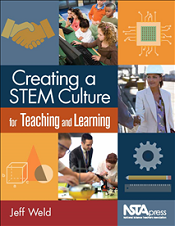 In Creating a STEM Culture, Weld argues for a holistic approach to STEM education. “Anything short of the cultivation of a culture for STEM is insufficient. Success requires a systemic rather than a piecemeal approach to STEM education. All dimensions of schooling must be on the table—teacher preparation, scheduling, school-parent relations, professional development, curriculum, assessment, the disciplines, physical space, administrator support, business and community engagement, and of course budgets. STEM is ushering an invigorating evolution of education,” Weld states in the opening chapter.
In Creating a STEM Culture, Weld argues for a holistic approach to STEM education. “Anything short of the cultivation of a culture for STEM is insufficient. Success requires a systemic rather than a piecemeal approach to STEM education. All dimensions of schooling must be on the table—teacher preparation, scheduling, school-parent relations, professional development, curriculum, assessment, the disciplines, physical space, administrator support, business and community engagement, and of course budgets. STEM is ushering an invigorating evolution of education,” Weld states in the opening chapter.
Weld notes that in the U.S., 47 states have launched Science-Technology-Engineering-Mathematics initiatives; globally, STEM has been an educational priority in many countries. In this book, Weld makes the argument for why STEM matters both inside and outside of school walls.
For school leaders, the book offers a road map for building community support and understanding to help them bring their districts and individual schools to the forefront of the nation’s STEM initiatives. For K-12 educators, the book offers practical tips and strategies for creating a classroom culture that includes effective and well-integrated STEM education.
For policy makers, Creating a STEM Culture makes the case for integrating STEM-related policies at the local, regional, state, and national policy levels. Also, for business leaders, the book explains why it is important to collaborate with the K-12 education system to create a future workforce that is prepared for careers that might not even yet exist.
Creating a STEM Culture is meant to create conversation. In fact, the book compiles a range of opinions from different sectors addressing two central questions: what scares people about adopting STEM education, and what excites them about adopting STEM education.
“The one thing that worries me most about America’s STEM movement that we need to get right is the opportunity for all students (not just the best and brightest) to become STEM literate. By this, I am referring to their ability to not only be able to know and understand basic science and mathematical facts and concepts as they apply to the natural and known world, but to also have the capacity to observe real-world situations and apply their STEM knowledge in a way that embraces and employs the technological problem-solving and engineering design processes to effectively create viable solutions,” says Steven Barbato, executive director and CEO, International Technology and Engineering Educators Association (ITEEA).
Read the free sample chapter, “Community Buy-in for STEM”, to learn about authentic examples of public awareness strategies that have been used to promote STEM in local communities.
This book is also available as an e-book.
Follow NSTA
Creating a STEM Culture for Teaching and Learning by Jeff Weld offers insight for educators, policy makers, and business leaders about why STEM education matters and where it’s headed next. This new NSTA Press book includes case studies and real life vignettes from people invested in bringing meaningful STEM curricula to K-12 classrooms.
Weld, who directs the Iowa Governor’s STEM Advisory Council, was formerly an award-winning high school science teacher.
Figuring out what seeds need to sprout
By Peggy Ashbrook
Posted on 2017-10-11
 Do seeds need soil to sprout? Many people would say yes. Preschool children may know, or at least are able to recite, that plants need “dirt,” water, and sunshine to grow. Left out is plants’ need for air—a developmentally appropriate omission. Although young children feel and use air, it isn’t until 5th grade that they are expected to be able to infer that air, a gas, is made of many small pieces of matter (PS1.A: Structure and Properties of Matter). Experiencing air through their breaths, feeling the wind, and filling balloons or making bubbles helps children build their understanding of the properties of a gas.
Do seeds need soil to sprout? Many people would say yes. Preschool children may know, or at least are able to recite, that plants need “dirt,” water, and sunshine to grow. Left out is plants’ need for air—a developmentally appropriate omission. Although young children feel and use air, it isn’t until 5th grade that they are expected to be able to infer that air, a gas, is made of many small pieces of matter (PS1.A: Structure and Properties of Matter). Experiencing air through their breaths, feeling the wind, and filling balloons or making bubbles helps children build their understanding of the properties of a gas.
As a solid, soil is much easier for children and adults to see in relationship to plants. As a solid it is often misdescribed as the “food” plants need to grow. Amazingly, plants build their bodies from carbon dioxide in the air using energy in sunlight.
The properties of solids, liquids, and gases can be explored when children plant seeds in systems they design themselves to hold seeds and support their sprouting. Children make interesting choices when they are given an opportunity to create a system for growing plants from seeds. In the October 2017 Early Years column in Science and Children describes how green beans on the lunch menu prompted a closer look at other kinds of beans. The children designed planting systems that reflected their beginning knowledge of seed sprouting and their personal aesthetics. Some used soil, convinced that without it the seeds would not sprout. Others choose the kitchen sink approach, using soil, cotton balls, and lots of water. Seeds were buried under soil and laid on top of it. Water was the one material that all children chose. Yes, every seed sprouting system had some success.
Children later noted that the seeds they planted outside in the garden looked better, stronger, and eventually produced beans while those indoors soon grew tall and fell over.
As changes to the plants happened more slowly, children lost interest and stopped watering. With repeated seed sprouting experiences and discussion to reflect on the changes they observed, children may build an understanding of (most) seeds’ ability to sprout when kept damp, and identify other needs of plants.
What kinds of materials do you think your children would choose for their seed sprouting system?
Science Teaching Stories: 140 Characters at a Time
By Korei Martin
Posted on 2017-10-10
In the world of Twitter we use 140 characters to tell wonderful and informative stories. And, in the world of NSTA, stories about excellence and innovations in science teaching are abounding. When joining the two worlds we make #NSTAchat—an answer to those who utilize social media to inform them about science teaching stories.
Click to Learn More About #NSTAchat
#NSTAchat began as a means to introduce “first timers” to NSTA area and national conferences. It has grown to be a bi-monthly chat to not only learn about upcoming conferences but also to meet NSTA leadership, NSTA Press authors, NSTA award winners, and committees that are working to make science teaching better. #NSTAchat enables “tweeters” to ask questions of those featured as well as provide resources found within the NSTA website.
Stories and resources from NSTA are featured every second and fourth Thursday of each month at 9 PM ET to enrich the teaching of science. #NSTAchat is one way to support the NSTA mission of promoting excellence and innovation in science teaching. “Tweeters” to the #NSTAchat not only learn about NSTA but they also build a network of science educators who are also striving to enrich the lives of their students.
Just as those who attend NSTA conferences can participate at different levels, #NSTAchat “tweeters” participate at different levels. Tweeters can actively engage the guests through questions,“retweet” new knowledge to their followers or just follow along the Tweet thread. The ultimate goal of #NSTAchat is to inform science educators about NSTA, it’s role in science education, and current issues in science education.
So why should one participate in #NSTAchat? #NSTAchat provides a direct link to what is happening in NSTA and the science education community. It provides resources and contacts that “tweeters” can utilize. It also supports those teachers who may teach in remote areas and do not have other science colleagues to consult. So join us the second and fourth Thursday of every month and be part of #NSTAchat.
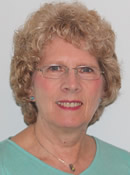 Dr. Carolyn Hayes is a retired NSTA president (2015-2016). Dr. Hayes is a retired high school biology teacher from Greenwood, Indiana. Hayes earned a B.S. degree in biology from Indiana University in 1973, a M.S. degree in secondary education from Indiana University in 1976, and an Ed.D. in secondary education and biology from Indiana University in 2005. Follow Carolyn on Twitter @caahayes.
Dr. Carolyn Hayes is a retired NSTA president (2015-2016). Dr. Hayes is a retired high school biology teacher from Greenwood, Indiana. Hayes earned a B.S. degree in biology from Indiana University in 1973, a M.S. degree in secondary education from Indiana University in 1976, and an Ed.D. in secondary education and biology from Indiana University in 2005. Follow Carolyn on Twitter @caahayes.
The mission of NSTA is to promote excellence and innovation in science teaching and learning for all.
Follow NSTA
In the world of Twitter we use 140 characters to tell wonderful and informative stories. And, in the world of NSTA, stories about excellence and innovations in science teaching are abounding. When joining the two worlds we make #NSTAchat—an answer to those who utilize social media to inform them about science teaching stories.
Click to Learn More About #NSTAchat
Starting a Club
By Gabe Kraljevic
Posted on 2017-10-09

Students prepare to launch a high-altitude balloon with science payload.
I would like to contribute to the extra-curricular activities in my school, but I’m not sure what I can do. Do you have any suggestions? —T., Pennsylvania
Some of my most rewarding teaching experiences often centered around extra-curricular science clubs. The appeal of a club (for the teacher and students) is that it is not a formal class with the burden of marked assignments, reports, and so on. In general, you will get a natural grouping of people who at least are interested in the same thing. It is also a place that, if students do not want to participate, they don’t have to.
Clubs can have specific goals: robotics; high-altitude ballooning; science fairs. Others can be more open-ended and allow the students to choose their directions: “Science Olympics” or “Enquiring Minds” for example.
I think the trick to a successful club is to pick something that you are truly interested in. Second, don’t feel that you have to be the expert! Let the students have a say and help run things. I ran robotics clubs for years and when students came up to me and asked how to do something I would say, “I don’t know, I’ve never built a robot before! Where do you think we can go to find out?” Use the club as a shared learning experience where students will see you as a learner and can feel that they can make significant contributions. A club is also a low-risk environment for making mistakes during the learning process.
Hope this helps!
Photo: Own work

Students prepare to launch a high-altitude balloon with science payload.



